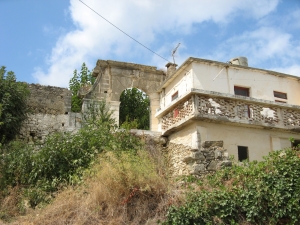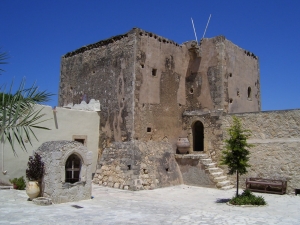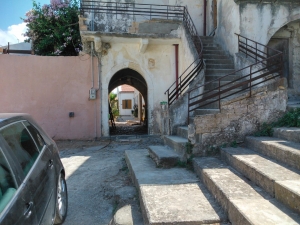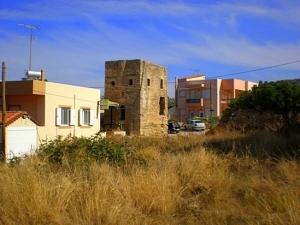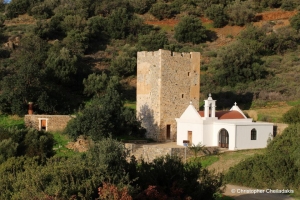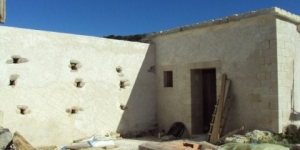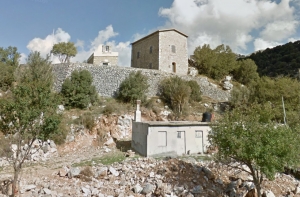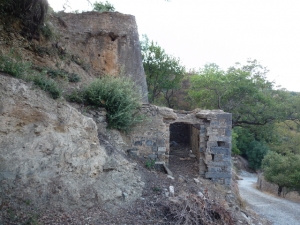There are the ruins of a Venetian villa of the 16th or 17th century called Rotonda, due to its circular shape. This is believed to have been planned as the holiday house of the Doge of Venice (the king of Venice), however the Venetians did not manage to completely build the villa, as the surviving plans depict.
Xopateras or Xopapas (nickname of John Markakis from Manousiana village) was one of the greatest revolutionary figures of Crete. His existence is closely associated with the monastery of Odigitria near Sivas.
In Neapolis town, in Agios Dimitrios area and next to the old aqueduct there was the house of the janissary Maslum Karakasis, which served as a tower. It was said to have 100 doors, one imposing central gate (called Portela today) and 30 arches. Portela gate closed in the same way of the castle Rumeli Hisar in Constantinople. The building was firstly constructed by the Venetian feudal lord Rasqualigo.
At the village Giannoudi we meet a three-storey tower which probably served as a fortified residence of a Venetian nobleman. The building has been declared as a monument by the Greek state.
The Tower of Kornaros is located at a lush green and quiet position northeast of Myrsine village, 24km west of Sitia. It is a small square stone-built tower probably of the 15th century that was used as a lookout during the period of the Venetian and the Ottoman rule, which has good views to the north coast.
The Venetian villa and the Venetian olive mill are located in the Monastery of Saint George at Karydi. The villa and the adjacent mill date back to the period 1650-1750. The mansion has undergone subsequent restorations, which have not been altered seriously its original form.
On the small hill opposite the cave Tzanis, we see the tower and the church of the legendary chieftain Hadjimihalis Giannaris (1833-1916) from village Lakki, who wanted to be buried here. Giannaris was one of the pioneers of revolutions of 1866-1869 and the political kneadingtill the Union of Crete with Greece in 1913..
One mile southwest of Neapolis town, on the northern slopes of Mount Kavalaras, there is the beautiful grove of Pashaligo. The small forest takes its name after the Venetian feudal lord Fillipo Pasqualigo, the military governor of Candia (1592-1600), who used to live in a nearby Tower.











